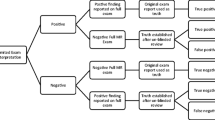Summary
The recently introduced horizontally open configuration imagers allow imaging of knee, hip or shoulder during whole range of motion, which is not possile in conventional MR imagers. Special joint motion devices can be used to provide accurate and reproducible studies. In cervical spine, functional MR imaging may be useful in evaluating alarligament stability in patients with late sequelae of a whiplash injury, and in patients with rheumatoid arthritis who are clinically suspected of having a cervical myelopathy or superior migration of the odontoid process. In shoulder, full range of motion abduction study may be helpful in assessing the supraspinatus tendon impingement. To evaluate patellofemoral malalignment, quadriceps loading is recommended since associated contracting muscles and related soft tissue structures can be evaluated. The position of the femoral head relative to the acetabulum during different positions can be assessed. Open-configuration scanners provide an access to patients during scanning procedure, and therefore permit interventional procedures to be monitored with MRI. Such interventions include aspiration cytology/biopsy and different drainage procedures.
Zusammenfassung
Die kürzlich eingeführten bildgebenden Systeme mit horizontal offener Konfiguration ermöglichen die Darstellung von Knie, Hüfte oder Schulter über den gesamten Bewegungsbereich, war bisher mit konventionellen MR-Systemen nicht möglich. Für genauere und reproduzierbare Untersuchungen können spezielle Gelenkbewegungsgeräte verwendet werden. Bei der Halswirbelsäule kann die funktionelle NMR-Darstellung im Hinblick auf die Beurteilung der Stabilität der Ligamenta alaria bei Patienten mit Spätfolgen eines Schleudertraumas und bei Patienten mit rheumatoider Arthritis von Nutzen sein, wenn klinisch eine zervikale Myelopathie oder superiore migration des Dens axis vermutet wird. Bei der Schulter kann eine Abduktionsstudie des vollen Bewegungsbereichs bei der Beurteilung eines Auftreffens des Tendo supraspinatus von Nutzen sein. Zur Beurteilung einer patellofemoralen Fehlstellung sollte der Quadrizeps belastet werden, da auf diese Weise die damit verbundene kontrahierende Muskulatur und verbundene Weichteilstrukturen beurteilt werden können. Die Lage des Caput femoris im Verhältnis zum Azetabulum in verschiedenen Stellungen kann beurteilt werden. Scanner mit offener Konfiguration ermöglichen während des Scannens Zugang zum Patienten und gestatten somit eine Überwachung von Interventionsverfahren durch MRT. Diese Interventionen umfassen die Aspirationszytologie/-biopsie sowie verschiedene Drainageverfahren.
Similar content being viewed by others
Author information
Authors and Affiliations
Rights and permissions
About this article
Cite this article
Koskinen, S., Parkkola, R., Karhu, J. et al. Orthopedic and interventional applications at low field MRI with horizontally open configuration A review. Radiologe 37, 819–824 (1997). https://doi.org/10.1007/s001170050288
Issue Date:
DOI: https://doi.org/10.1007/s001170050288




